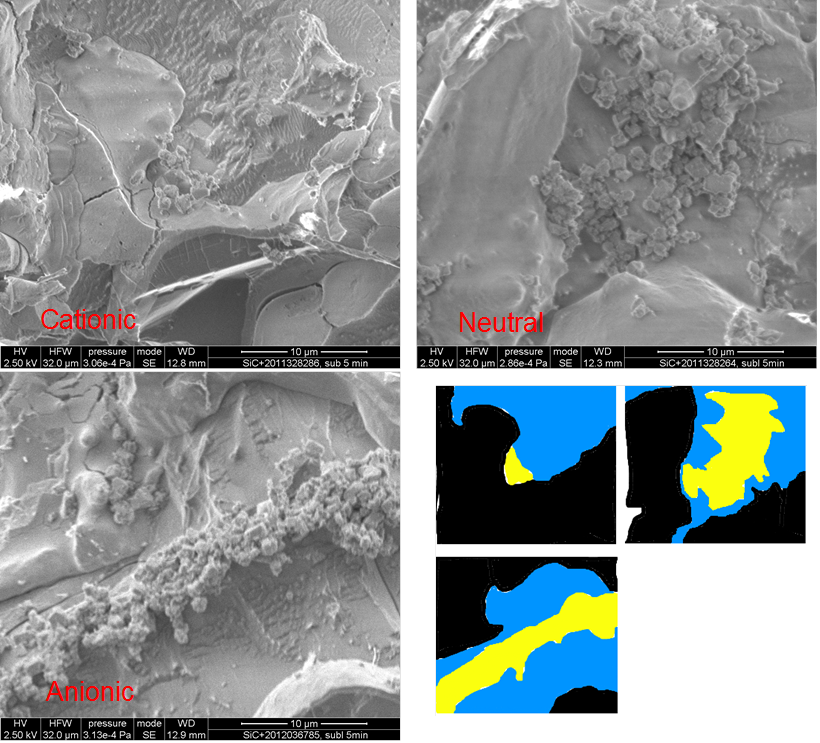IT-7-P-2143 Observing impregnation dynamics at the liquid-solid interface using scanning electron microscopy: Charged-controlled SAPO-34 zeolite particle dispersion on SiC substrates
Insight into colloidal and interface processes benefits from observations made by electron microscopy. A wide palette of materials manufacturing techniques rely on drying of colloidal systems. The drying step plays a key role in distributing the suspended solid particles on a substrate and the density, clustering and packing of solid particles will intimately depend on the evaporation of the solvent. In general, drying is believed to depend on several parameters such as the surface tension of the liquid, the zeta potential of the particles and the state of the substrate. Up to now, observations of the dynamic processes during drying are scarce. Here, such investigations are reported for the dispersion of approximately 1 µm wide SAPO-34 zeolite particles suspended in liquid onto a porous outer surface of the SiC substrate, as a model system for automotive exhaust abatement catalysts. Using scanning electron microscopy (SEM) in combination with a differentially pumped vacuum system and a Peltier cooling stage, time-lapsed image series are acquired in situ during humidity variation at constant specimen temperature, whereby the dynamic arrangement of particles on the substrates is directly observed. Specifically, the effect of surface-modifications for cationic, anionic and neutrally charged particles in the suspension is shown to markedly affect the distribution on the SiC. Moreover, complementary SEM observations under cryo conditions of freeze-fractures of the fully hydrated samples are pursued to provide a snapshot of the particle distribution inside the porous SiC, Fig. 1. Differences in the arrangements of the zeolite particles in the liquid, indicate that electrostatic interactions between the charged particles and the substrate in the porous structure. These results can directly be explained by the electrostatic interaction between the SAPO-34 zeolite particles and the SiC substrate and proposes a method for guiding particle dispersions in porous support systems.
